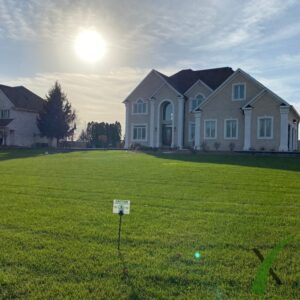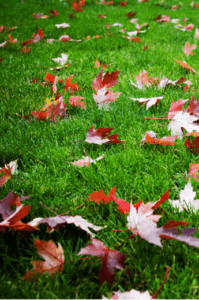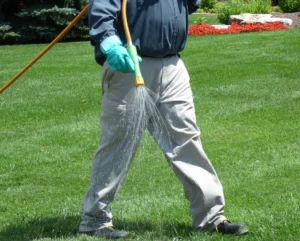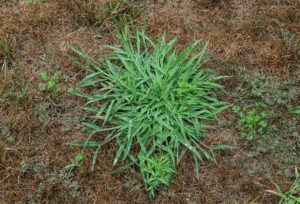Kentucky Bluegrass Vs. Turf-Type Tall Fescue [TTTF]
Kentucky Bluegrass
The most common turf grass in the northern two thirds of the US is Kentucky Bluegrass. Because of its natural beauty, ability to spread, thicken on its own and fill in damaged areas, Ky Blue is the first choice of most homeowners.
Disadvantages of Kentucky Bluegrass
Still, bluegrass has significant drawbacks. For example, bluegrass requires regular fertilization with nitrogen and potassium to perform its best and thrive. Grass should be ‘fed’ approximately every five to six weeks throughout the growing season.

Another factor when considering a lawn of Kentucky bluegrass, is that it is susceptible to a number of spring and summer turf diseases, such as leaf spot, dollar spot and brown patch. Each of these diseases can cause serious turf damage and with nearly all fungal diseases, none is easily controlled.
In addition, bluegrass, while looking great in the sun, does typically not do well in shady areas of the lawn. And, to look good and perform well, bluegrass does require an inch to an inch and a half of supplemental water each week, in lieu of rainfall. So, it is not a perfect turf grass.
Turf-Type Tall Fescue
Enter Turf-Type Tall Fescue [TTTF]. While admittedly not exhibiting the same level of dark blue/green color and density as bluegrass, TTTF has some important and, to some, significant advantages. For those willing to sacrifice the color and density of bluegrass, and be willing to do an occasional over-seeding fall to thicken up the turf and repair any damaged area, this can be an excellent choice.

Advantages of Tall Fescue Grass
TTTF does not require as much nitrogen fertilizer, making it a good choice for large turf areas.
TTTF does not require as much water to retain its normal color.
TTTF does not fall victim to as many turf diseases [only brown patch is a serious problem].
TTTF is not nearly as damage-prone from insects.
Bottom line, choosing the right grass variety means considering the location and size of the turf area to be maintained as well as the lawn care budget and homeowner willingness to provide the right care through the growing season.


Join Our Free Lawn Care Newsletter
Stay Up to Date With The Latest News & Updates
* We don’t share your info with anyone ever.






